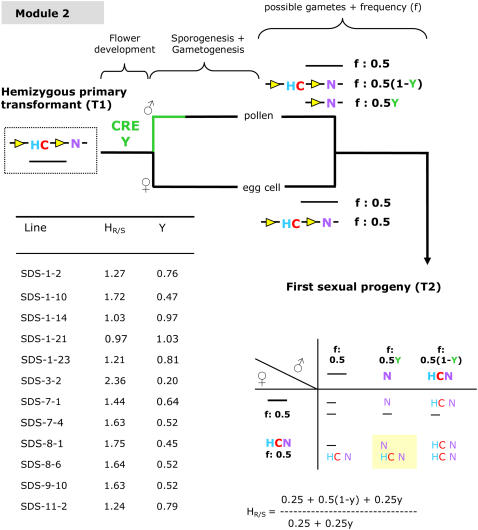Figure 4.
Determining the CRE efficiency in module 2 (single germline CRE functionality). Yellow triangle, lox site; C, codA cassette, counter-selection on 5FC; H, hpt cassette, resistance to hygromycin; N, nptII cassette, resistance to kanamycin; between the lox sites is a 2.2-kb promoter fragment of the Arabidopsis SDS gene present upstream of the cre gene containing an intron. HR/S, Ratio of resistant-to-sensitive first sexual progeny plants on hygromycin (n = ±200 seeds). Y, Efficiency with which the CRE/lox recombination occurs in a single germline (indicated in green; e.g. the male germline) leading to a marker-free gamete. Transmission of the marker to the T2 progeny through one germline results in a HR/S close to 1:1 if the transgene is present in one locus and the excision in the other germline occurred efficiently. Homozygous plants, containing a recombined (N) and a nonrecombined (NHC) allele, can easily be discriminated by PCR (highlighted). A complete overview of the segregation data are given in Supplemental Table S5. For each line, Y was calculated from the observed HR/S ratio (see also “Materials and Methods”).

